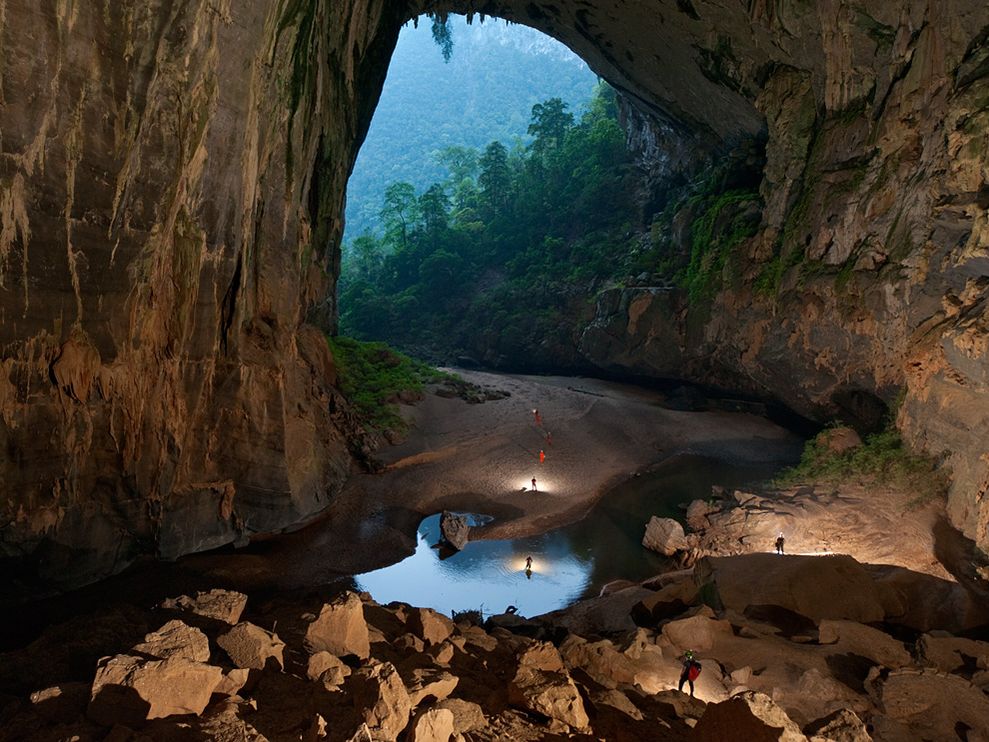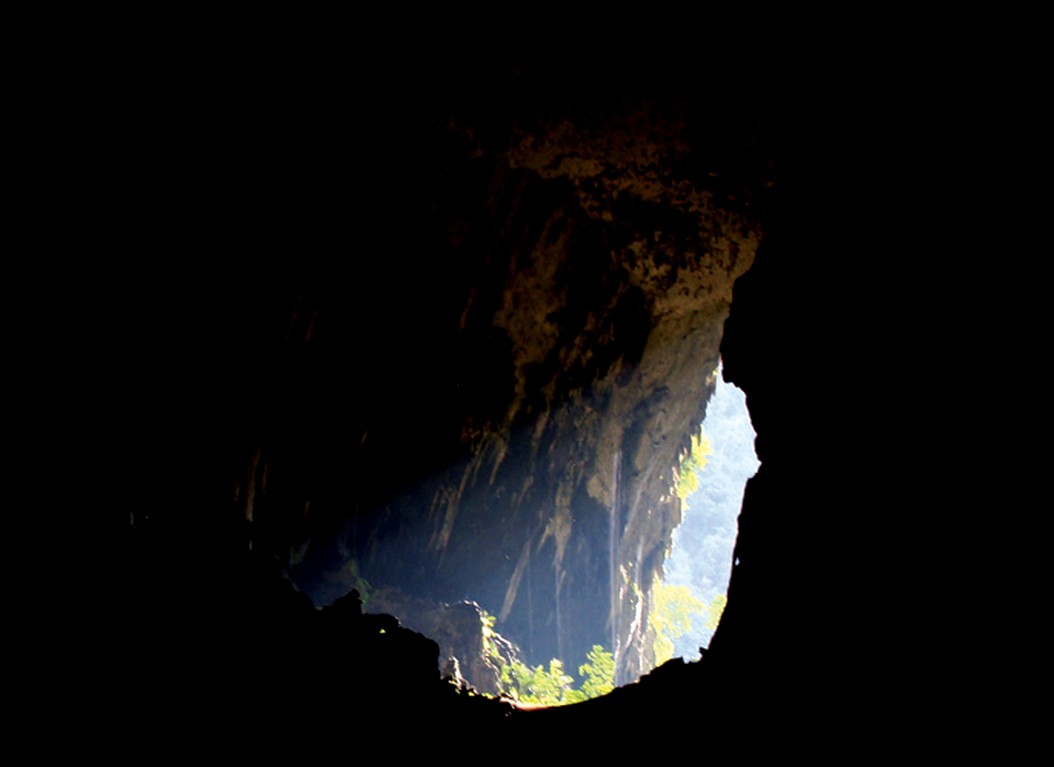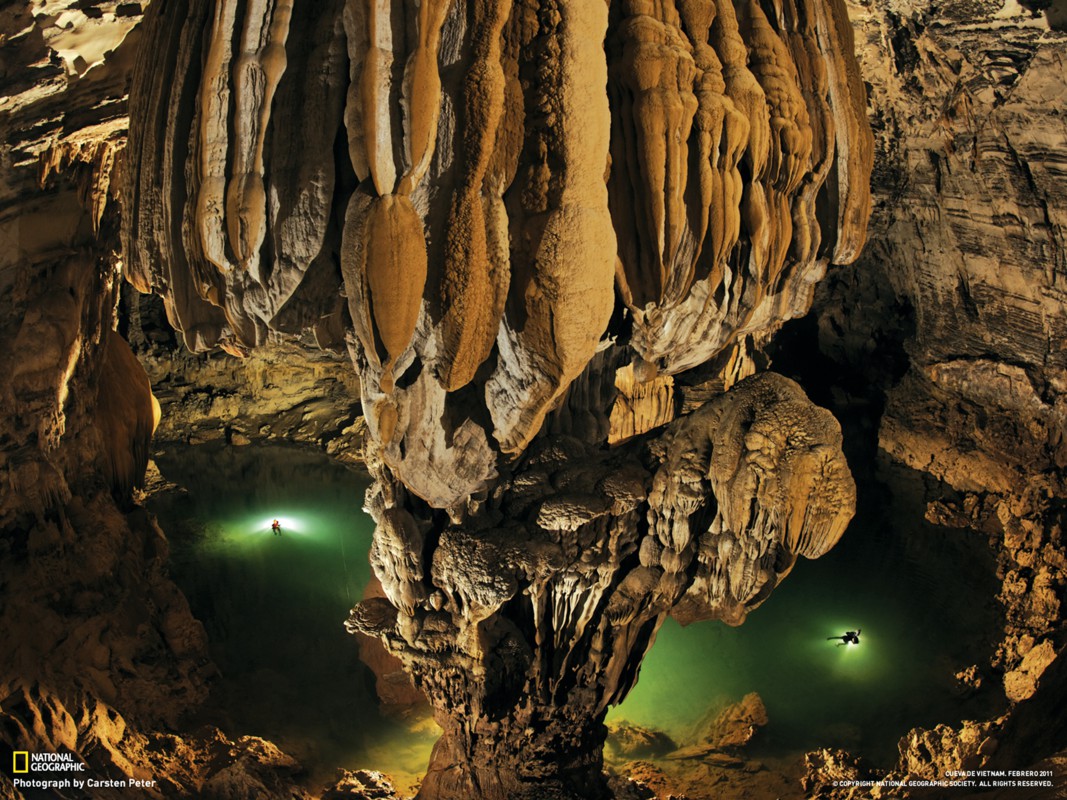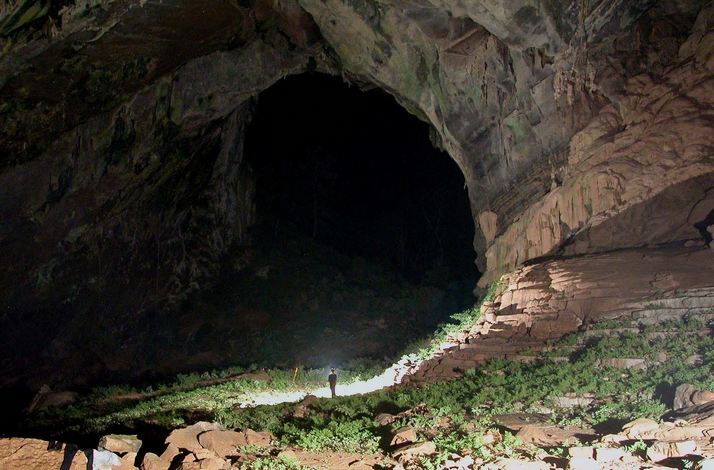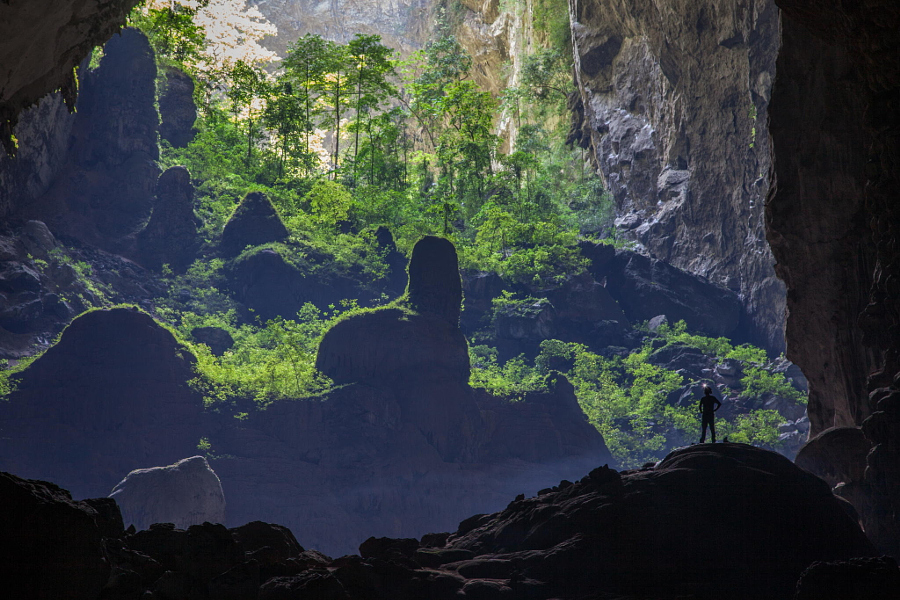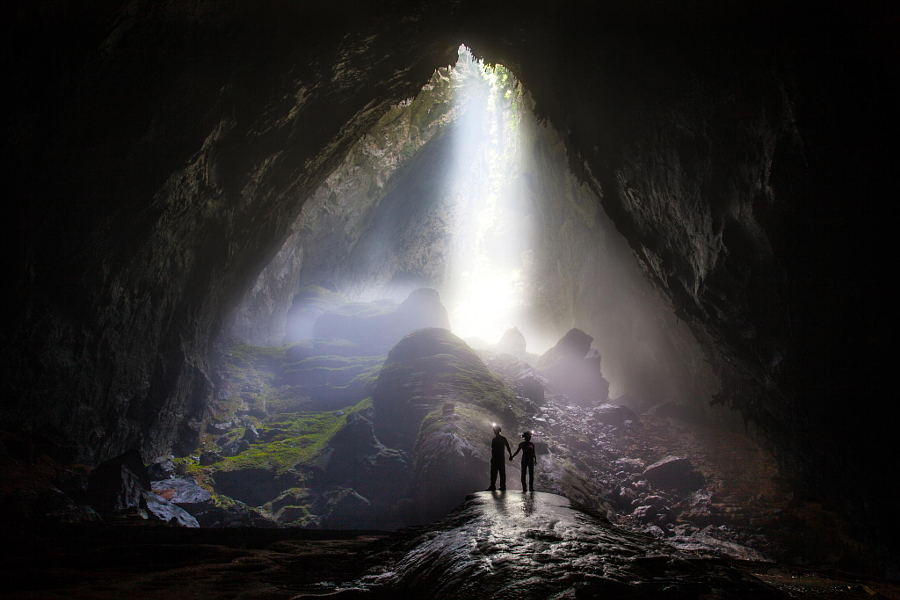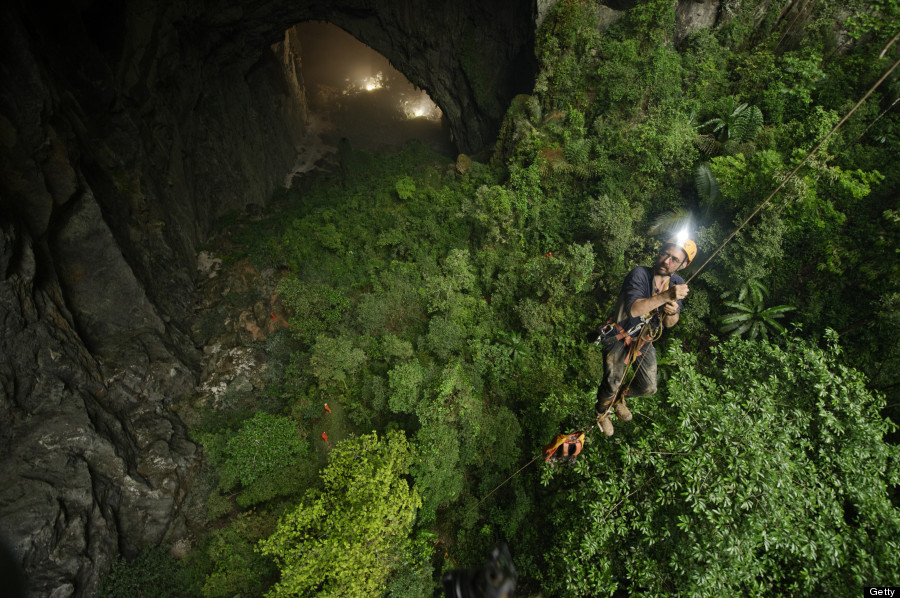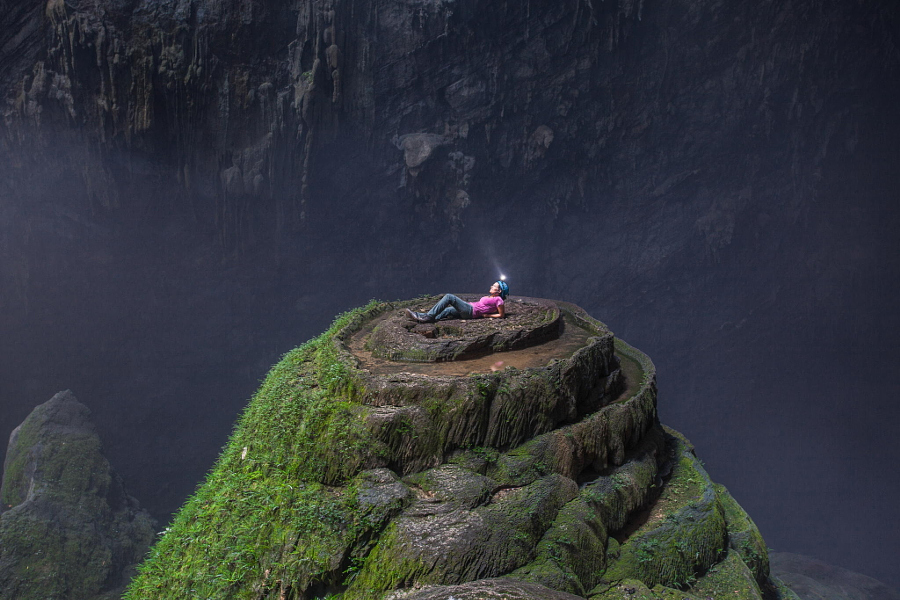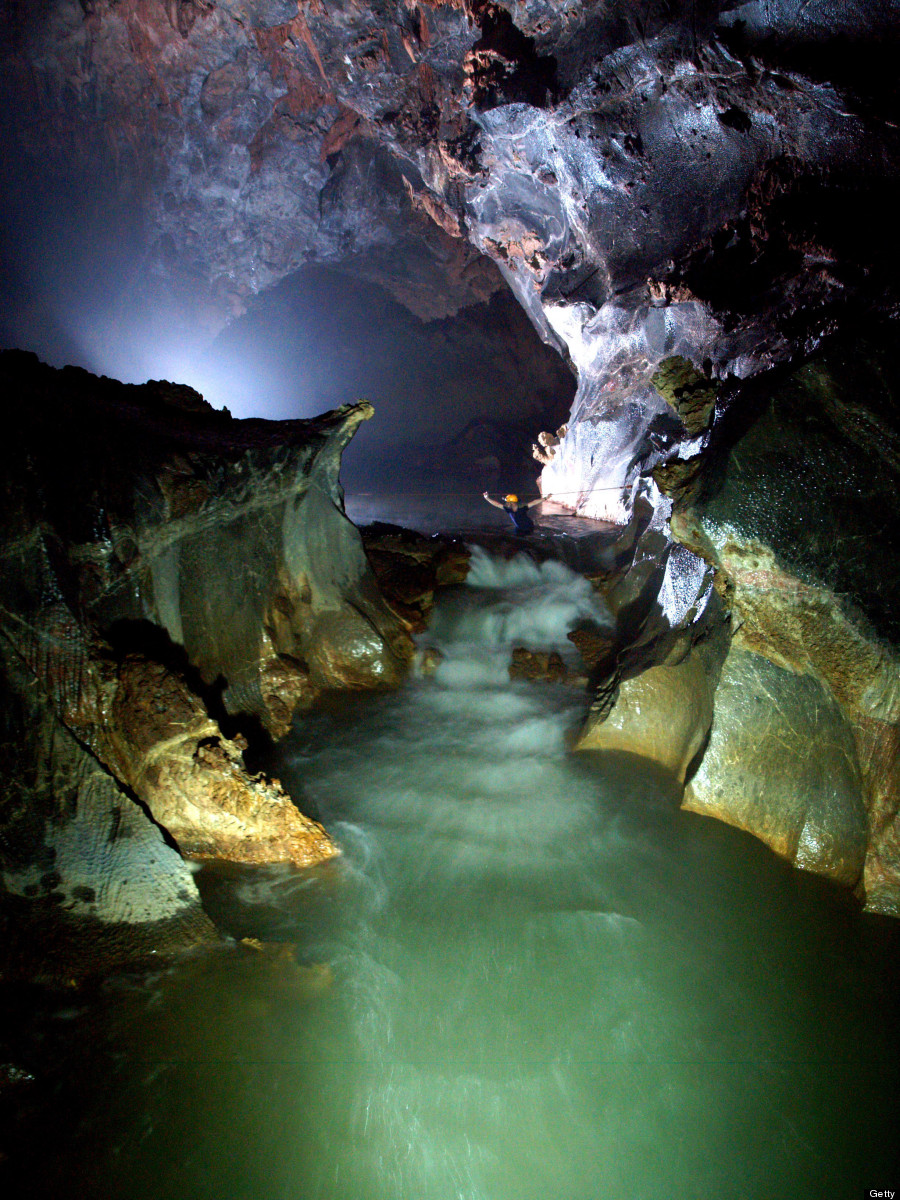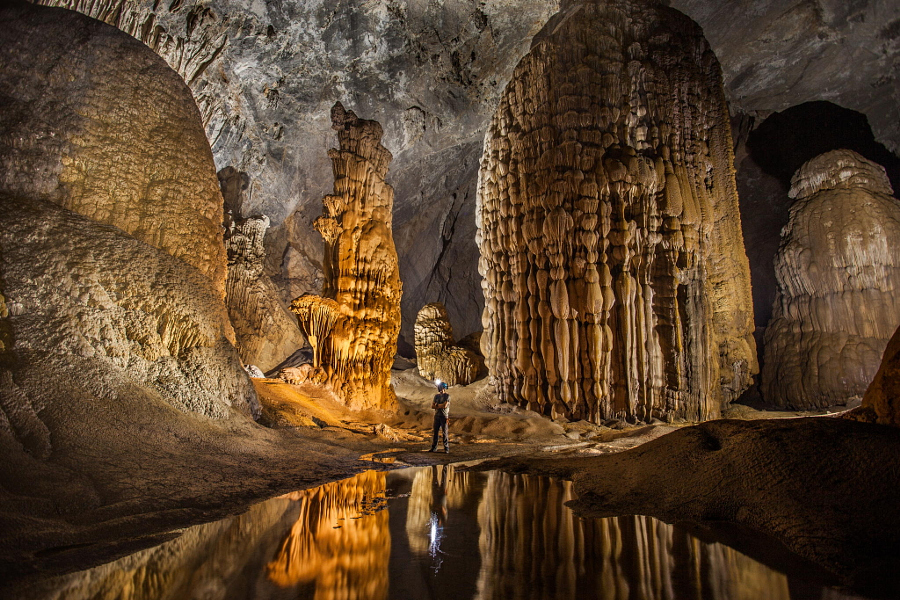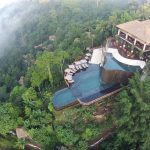Son Doong experience — Amazing beyond words
It took us approximately a day to go to Son Doong, the largest cave in the world located in the National Park-Phong Nha, Ke Bang, Quang Binh province, through forests, streams, and a lot of rain. Despite the fact that we were only able to tour one section of the cave, we were pleased and honored to be among the first Vietnamese amateur cavers to penetrate Son Doong.
The British Cave Research Association designated Son Dong Cave in National Park Phong Nha, Ke Bang (Quang Binh) as the world’s biggest known cave tunnel on April 22, 2009. Son Doong Cave, which measures 262-by-262 feet (80-by-80 meters) in most parts, surpasses the previous world record holder, Deer Cave in Malaysia’s Gunung Mulu National Park. After a year, experts determined that Son Dong Cave is at least 8.5 kilometers long, 200 meters high, and perhaps up to 250 meters high.
Hang En Cave
A strong downpour greeted us at Phong Nha, Ke Bang. The route through a deep and damp primeval woodland was obscured by leaf layers that prevented sunlight from penetrating the ground. Everyone went in silence, step by step, across the slick, muddy ground infested with terrestrial leeches. We arrived at the Rao Thuong stream after a 1.5-hour hike through the forest. The river ran gently throughout the dry season, and the rocks emerged in the stream. The route along the creek was flatter and easier from here.
We continued walking for another half hour and came to Doong hamlet, which has 6 Van Kieu ethnic minority houses spread across this remote hilly terrain. The youngsters sitting on the thatched roof home stared at us curiously. We continued walking for 3.5 kilometers to En (swallow) Cave, our first night’s accommodation on the route to Son Doong. We strolled through a banana, weed, gynura crepidioides, colocasia esculenta, and laportea forest. We had to chop down the wild bananas to find our path because they grew so densely. The early rain provided cool air but turned the terrain into sticky muck, preventing us from moving.
We continued going till we came to the entrance of En Cave, which was concealed in the distance. The stream became twisted before disappearing within the cave. While we were still getting used to the dark, a swarm of butterflies appeared, encircling the unusual guests as if we were in the Nederland of fairytale stories.
We continued our trek to Son Doong the next day after eating supper and slept in tents inside the Cave. It was anticipated to be more challenging, but also more thrilling. Indeed, on this day, we were able to tour two caves: En Cave, which has the largest entrance, and Son Doong, the world’s largest cave.
We followed the stream to go inside Hang En, climbed the rock field, and passed the smooth sand. We could not remember how many times we waded through the stream in the middle of the cave, and then climbed up and down the walls. We were tired, making efforts to pass a quite high stone slope when we saw a dazzling light ahead. It was the entrance of En Cave, 78 meters in height and 70 meters wide. Above the cave was flocks of swallows flying up and down and singing cheerfully. Beneath, the people who reached the entrance became the tiny black dots on the sparkling rocks under the sun.
Son Doong Discovery
After Hang En, the path to Son Doong got more adventurous with dense forests and high, slippery slopes. The streams got deeper and the current became stronger. The rock cliff got narrower, thus we had to trek carefully. Our big backpacks were sometimes stuck. The slopes were very high, muddy and slippery with only a skinny ladder to climb.

We arrived at the cave entrance after two hours of navigating the steep and jagged gullies. It was far smaller than we had anticipated. It was mossy, misty, and gloomy. We descended the steep entrance after arranging ropes and torches. We were nervous as we took our first steps into the world’s largest cave.
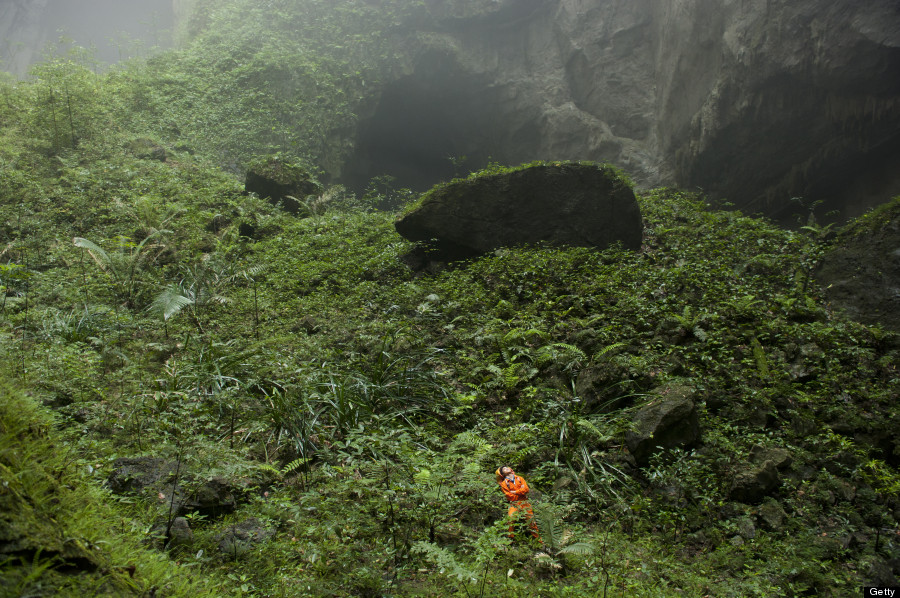
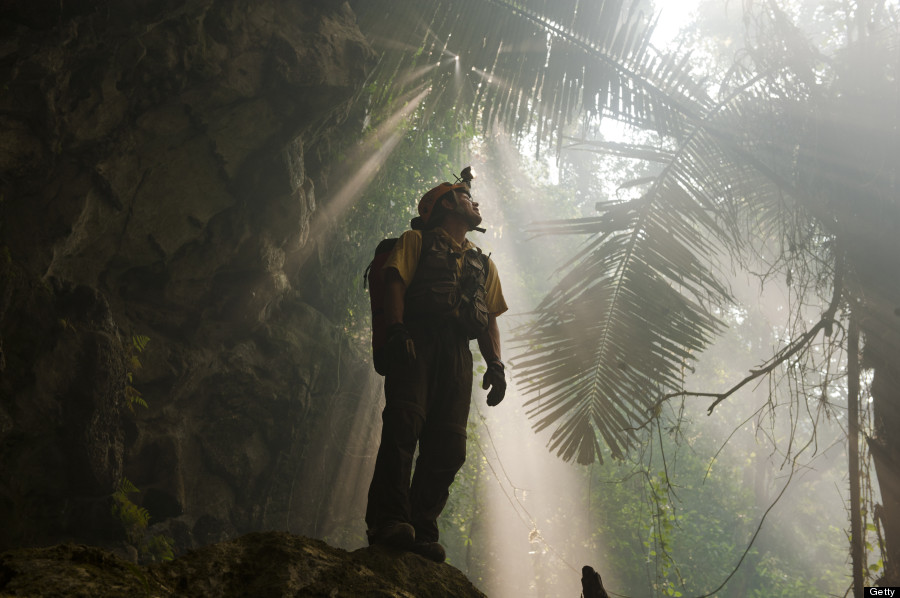
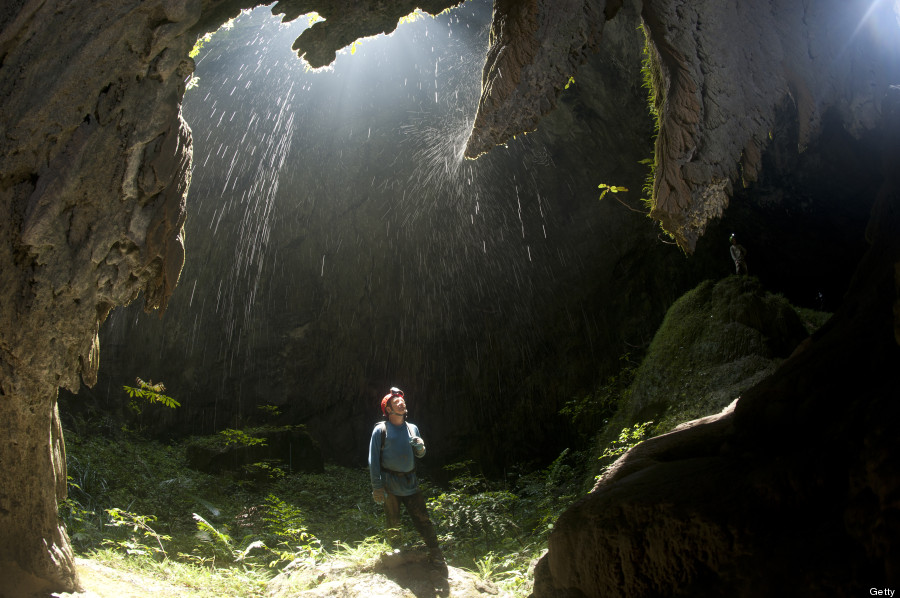
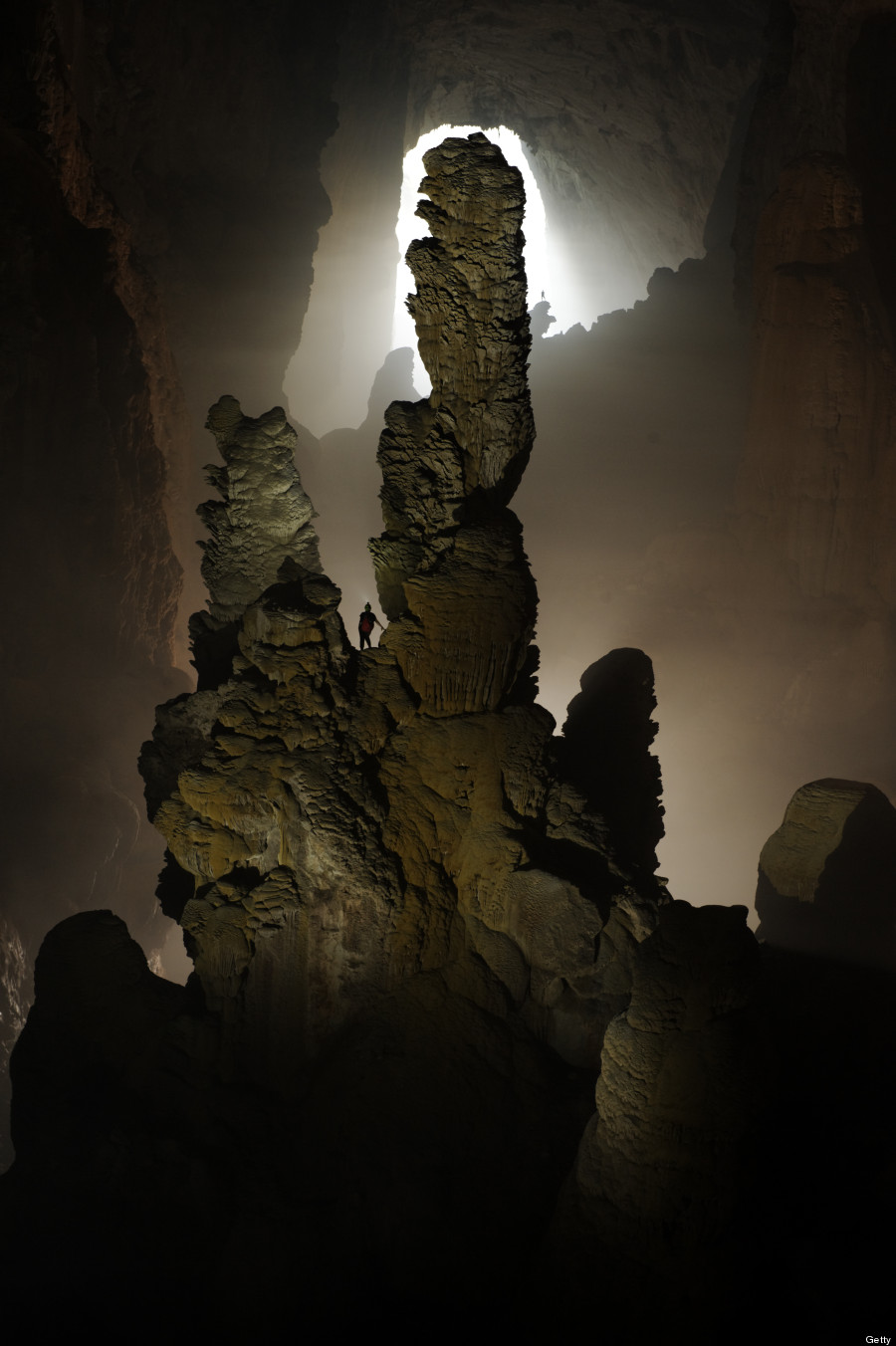
Under the low light of a lantern, the cave bed spread up, revealing the massive stalactites. We heard the rushing water echoing more loudly and impatiently as we passed by a twist. It was a churning little creek with white foam obstructing the path. We had to cross the creek without a rope by holding hands and stepping cautiously on the slick large cobblestones in the center of the river bed.

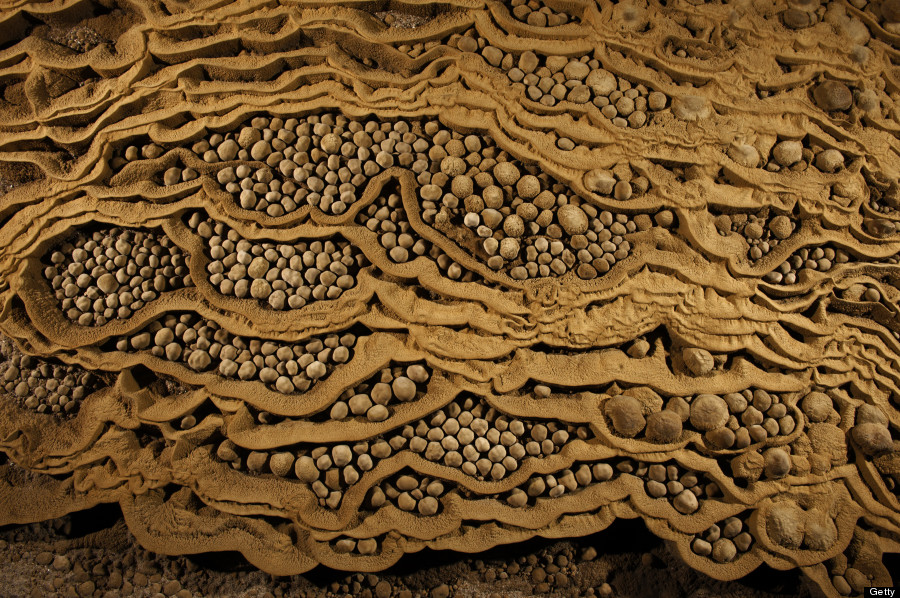
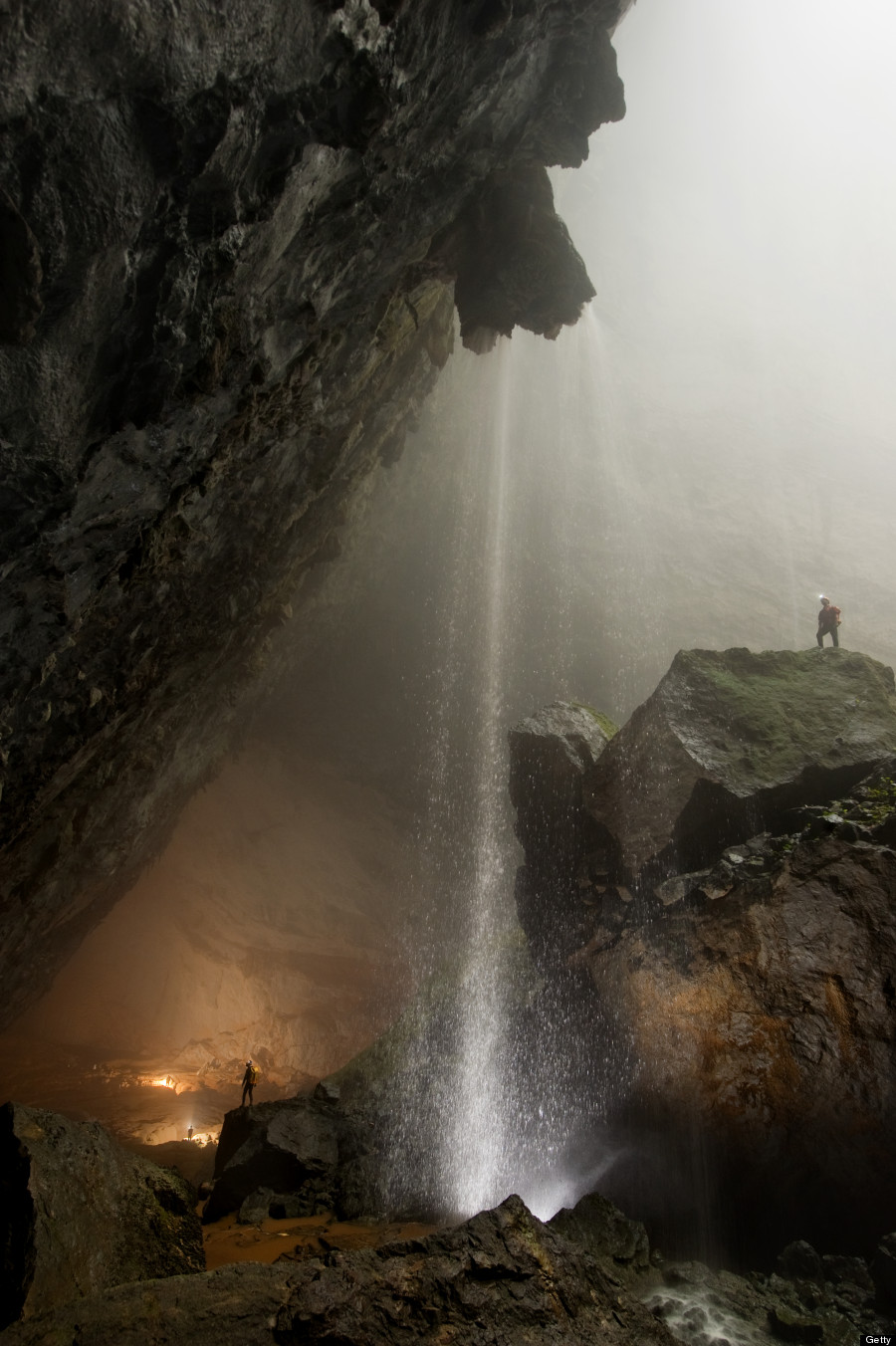
We were ecstatic after overcoming the first difficulty since we were the first amateur explorers in Son Doong Cave. The low and flickering light of headlights was like fireflies, and it was enough to take our breath away as we gazed at Son Doong’s breathtaking beauty. Massive stalagmites ran for hundreds of kilometers from the cliff to the cave’s bottom. The tiny stalagmites resemble beautiful mountains. While we were admiring this natural beauty, several voices said, “See Doline 1 already!”. Doline 1 is the first collapsed ceiling where light enters the cave and was also our first stop on our first day in Son Doong. Everyone hurried to the top when they noticed a fuzzy flickering speck in the distance. We came to a halt for 10 minutes when Doline 1 emerged clearly, and from above, we joyously observed a magnificent stream of light plunging into the dark cave. A bank of smooth sand lies at the foot of Doline 1. The cave bed transforms into a wide infinite slope with the magnificently stone wall under the illuminating light from the deep pools to the ceiling (dozens of kilometers).
A half-mile block of 40-story structures, according to National Geographic explorers, might fit inside this section of Hang Son Dong. We were hesitant to stop since there was no way to cross this extremely deep chasm. With a heavy heart, we resolved to acquire additional equipment, gadgets, and train to climb with bolts so that one day, we might return to Son Doong Cave and find the remainder.











